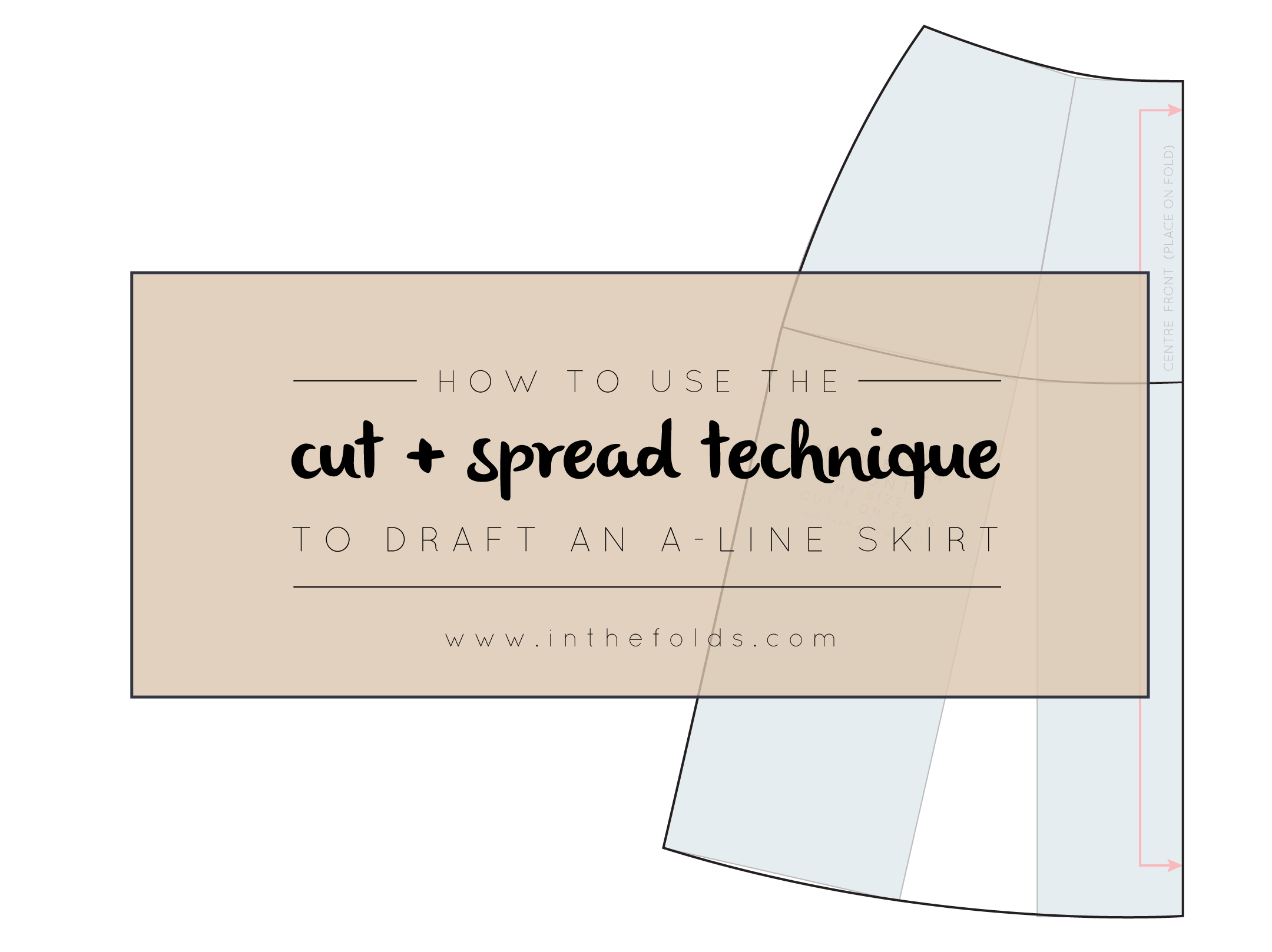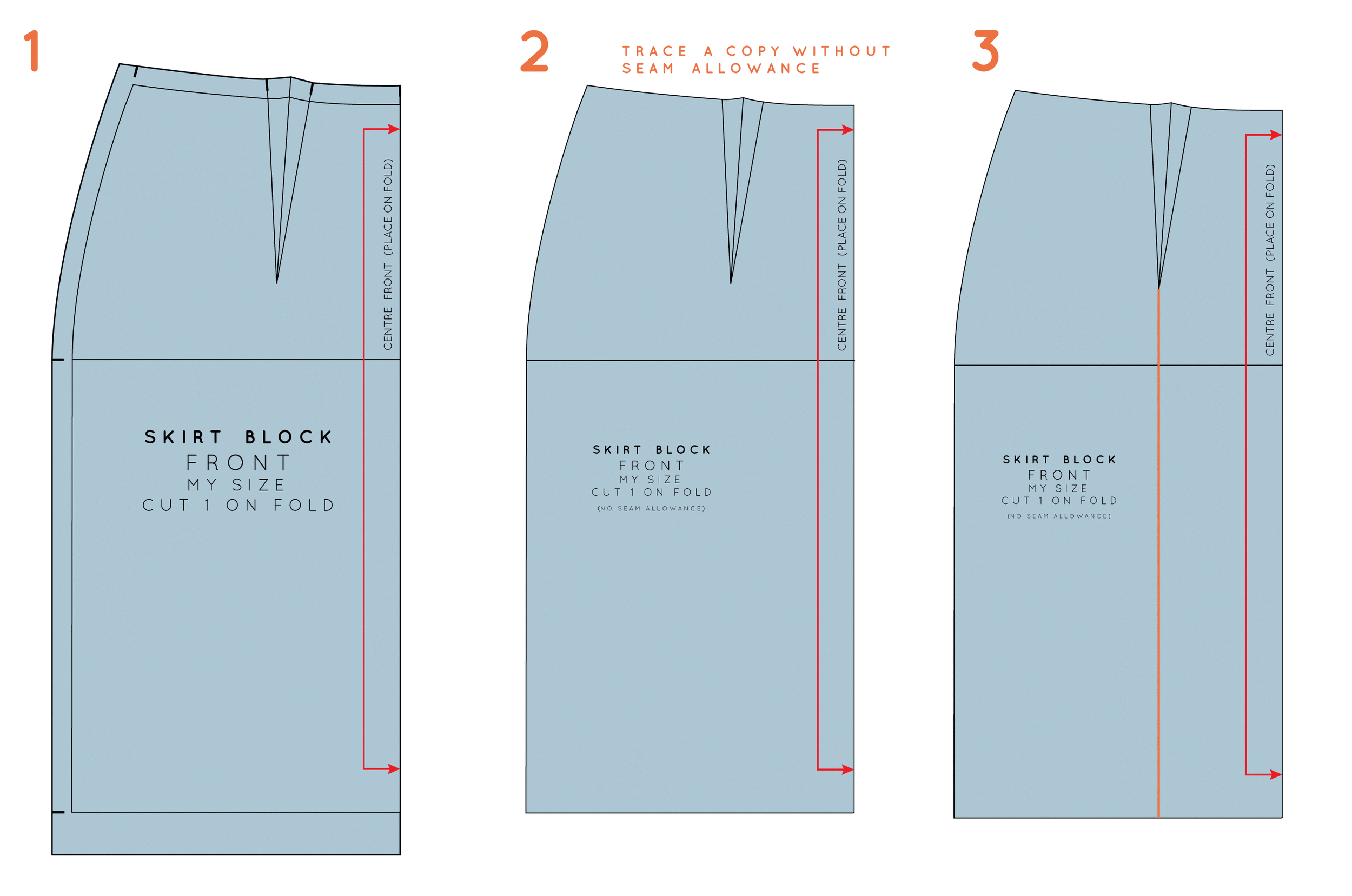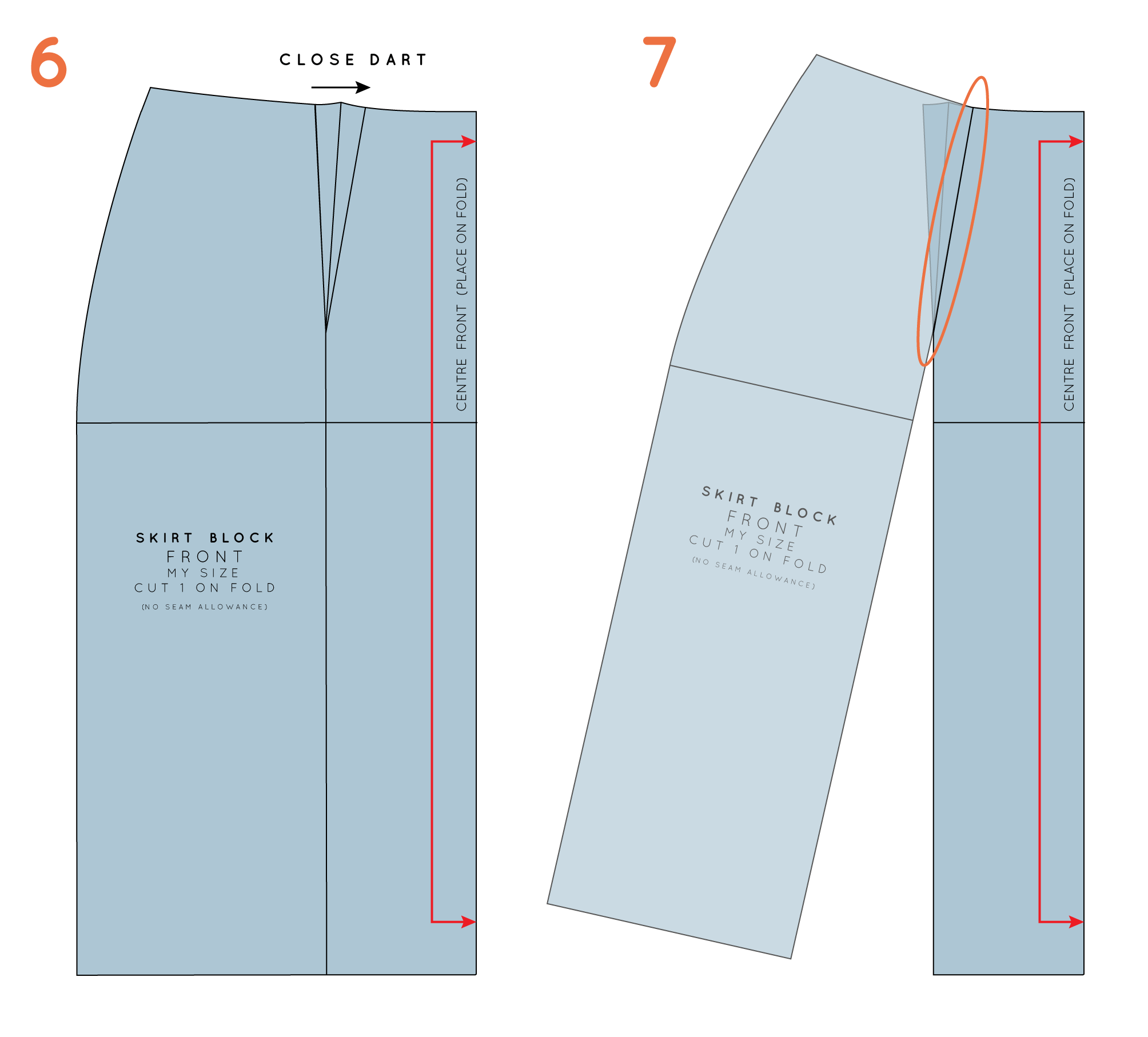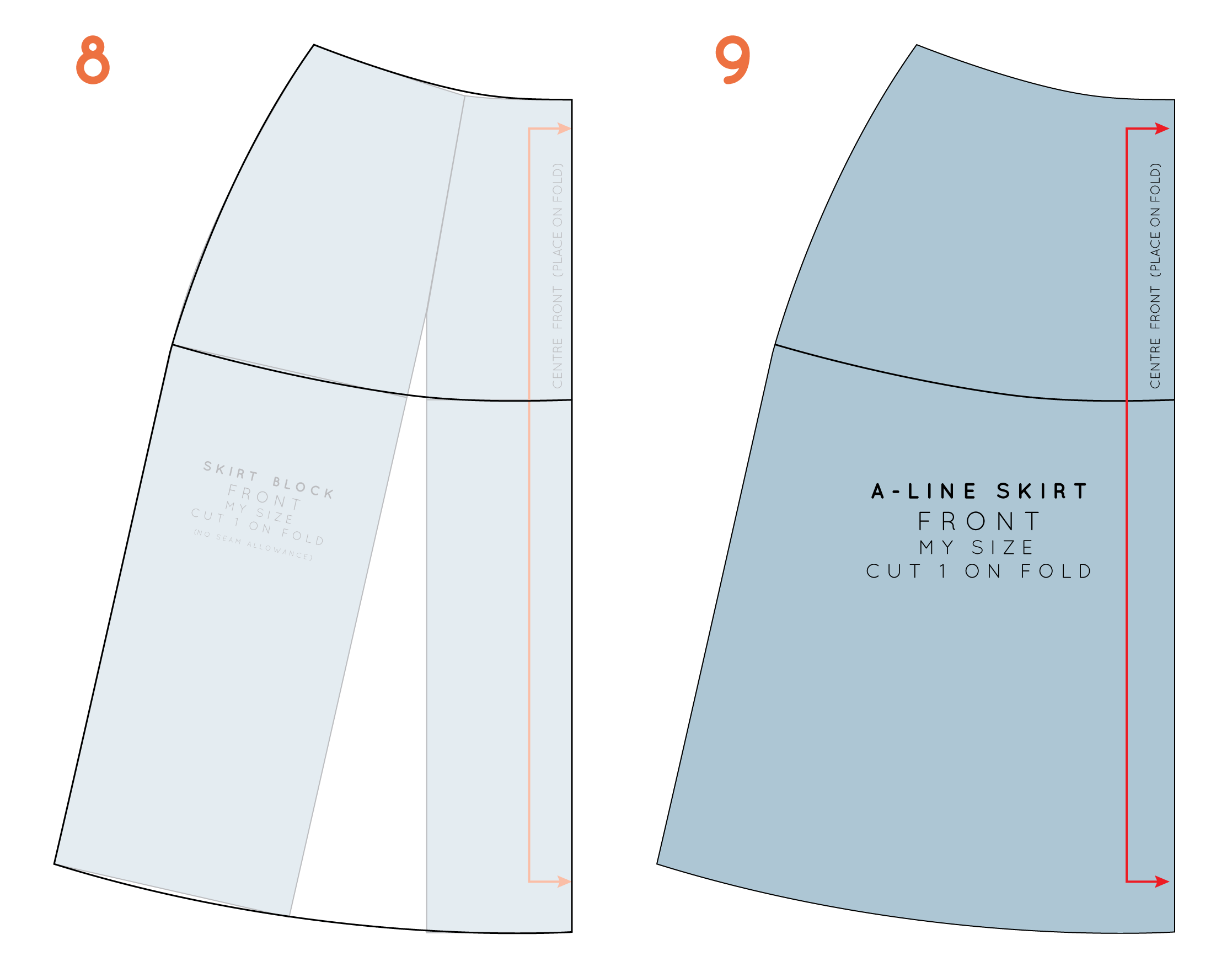After a few days of Rushcutter pattern alterations, it is time to get back to our skirt blocks, as it is, after all, Throwback Thursday! So Welcome back to The Skirt Series! Now that the pattern is pretty much complete (we just need to create a waistband pattern - which I will cover in tomorrow's post) I think we should have a play around with our new pattern blocks.
Once you have a skirt block that fits you well, there is just so much that can be done with it, and over the next few weeks I plan to show you some of the techniques you will need to know to transform your block into a skirt.
One of the techniques I use the most when I am flat pattern-making, is relocating darts. So I think that is a good place for us to start! Once you know how to do it, you will be able to use this technique on any pattern that has darts.
Cut and spread
So today, I will show you how to relocate the waist darts in the skirt block, to create an A-line skirt.
1. To start, you will need your skirt block. I will demonstrate by showing the front pattern piece, but the principle is exactly the same for the back pattern piece.
2. Trace a copy of your skirt block, without seam allowance.
3. Draw a line, parallel to the centre front, from the tip of the dart, down to the hemline.
4. Starting at the hemline, cut along this line, until you are 1-2mm from the dart point.
5. Now focusing on the outside dart arm (the dart closest to the side seam), cut down from the waistline towards the dart point, once again stopping 1-2mm from the dart point. This will create a small 'hinge,' so that the two parts of your pattern remain attached. But you will be able to open and close your dart with ease.
6. Close the waist dart by rotating the pattern, until the cut dart arm sits on top of the inner dart arm.
7. When in position, tape (or glue) in place. You will see that, by closing the dart, you have opened up the hemline, giving the skirt an A-line shape.
Trace the pattern
8. Take a separate piece of pattern paper and use a weight to hold it in place on top of the pattern. Trace around the pattern. You will see that the waistline has become quite angular since removing the dart, so you will need to redraw it with a soft curve. You will also need to redraw the hem with a smooth curve.
9. Add pattern details, notches and repeat for the back pattern piece.
10. If you would like a more drastic A-line you can redraw the side seam as a straight line (this will remove any shaping around the waist). To complete the pattern, add seam allowance.
Want to give it a go yourself?
I have created a small scale version of my skirt block that you can download (just click the image above) so that you can have a play around, if you are short of time, paper or space. It is also great to have a small scale version of techniques for your reference, so that you can easily store them for reference. And there will be many more new techniques to come, so print a few copies!



























